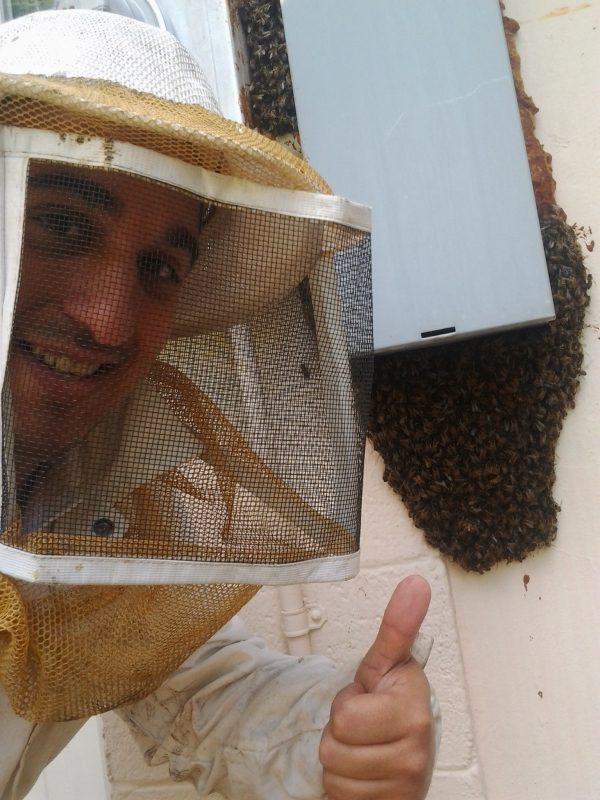Bees
BEE REMOVAL MIAMI
Monster Pest Control offers Bee Services in Miami a top-notch bee service in the Miami-Dade area. Our team of experienced bee removal specialists are dedicated to safely and effectively remove bee swarms and wasps from your property. As a licensed and certified pest control operator in the state of Florida. Whether you have a small bee problem or a large infestation, our professional bee removal team can handle the job with care and expertise.
When you call our bee removal company, you can rest assured that we will service bees from your property in a safe and effective manner. Live bee removals are not done in our company, we do recommend calling your local beekeeper for live bee removals. Our team is trained to deal with bee swarms and scout bees, ensuring that the entire colony is eradicated. We also offer wasp removal services for those pesky stingers. If you have a bee problem in Miami Beach, North Miami, Miami Shores, and South Miami, give us a call for a free bee removal estimate.
Our licensed pest control technicians are experts in bee control and can perform bee removal near you with precision. From honey bee swarms to nuisance honey bee colonies, we guarantee a thorough bee removal process that will bee-proof your property. Don’t let thousands of bees in your property invade your space – call Monster Pest Control for Bee Services in Miami Dade County for fast and efficient bee and wasp services.
All about Bees/Wasps in Miami, FL
1. What is the importance of bee removal in Miami?
Bees play a crucial role in our ecosystem, but their presence near human habitats can pose risks. If you encounter a bee swarm or hive near your property in Miami, prompt bee removal is essential to ensure the safety of residents and prevent potential stings.
2. How do I identify a honey bee infestation in Miami?
Honey bees are common in Miami and can be identified by their distinct yellow and black stripes. If you notice a large number of bees congregating in one area, especially around a hive or swarm, it’s a sign of a honey bee infestation that may require professional bee removal services.
3. What steps should I take if I find a wasp nest in Miami?
Discovering a wasp nest on your property can be concerning. It’s important to avoid disturbing the nest and immediately contact a professional wasp removal service in Miami to safely and effectively eliminate the nest.
4. Are Africanized bees a common problem in Miami, FL?
Africanized bees, also known as “killer bees,” have been reported in Florida, including Miami. These bees are more aggressive than native honey bees and can pose a serious threat to humans and animals. If you suspect Africanized bees on your property, contact a bee removal specialist immediately.
5.What measures can I take to prevent the bees from returning?
Engaging the services of a certified pest control firm in Miami, with expertise and proper licensing in the eradication of bees to ensure they do not return.
6. What steps should I take if I come across a sizable bee swarm on my premises?
The proper course of action if you come across a significant swarm of bees is to promptly walk away and seek assistance from a trained professional.

 Free Estimate:
Free Estimate: 

